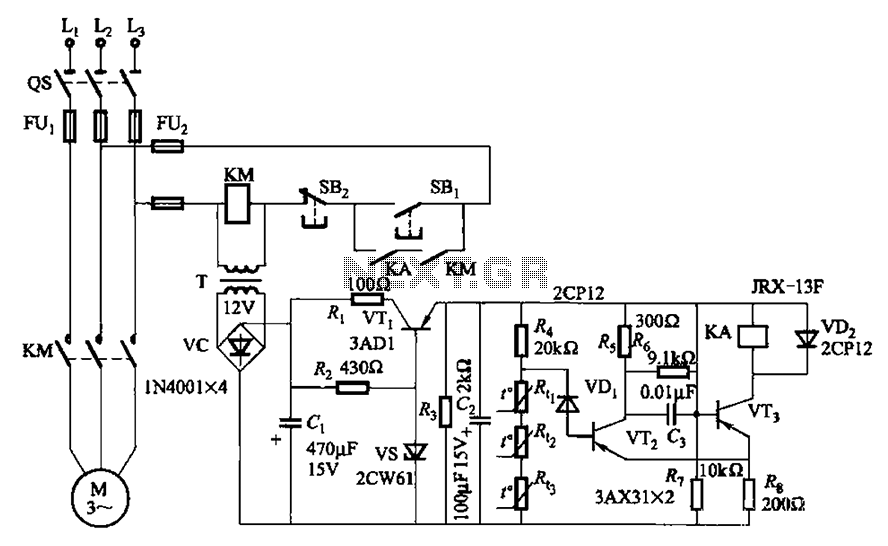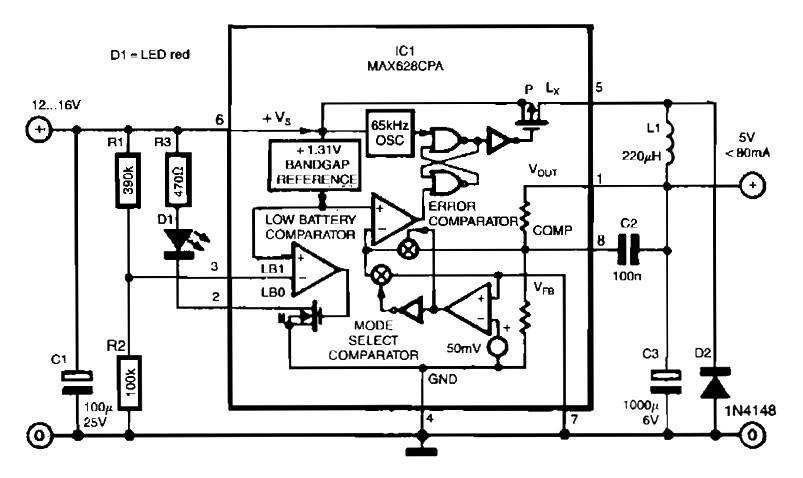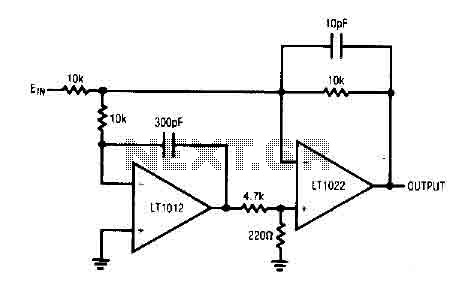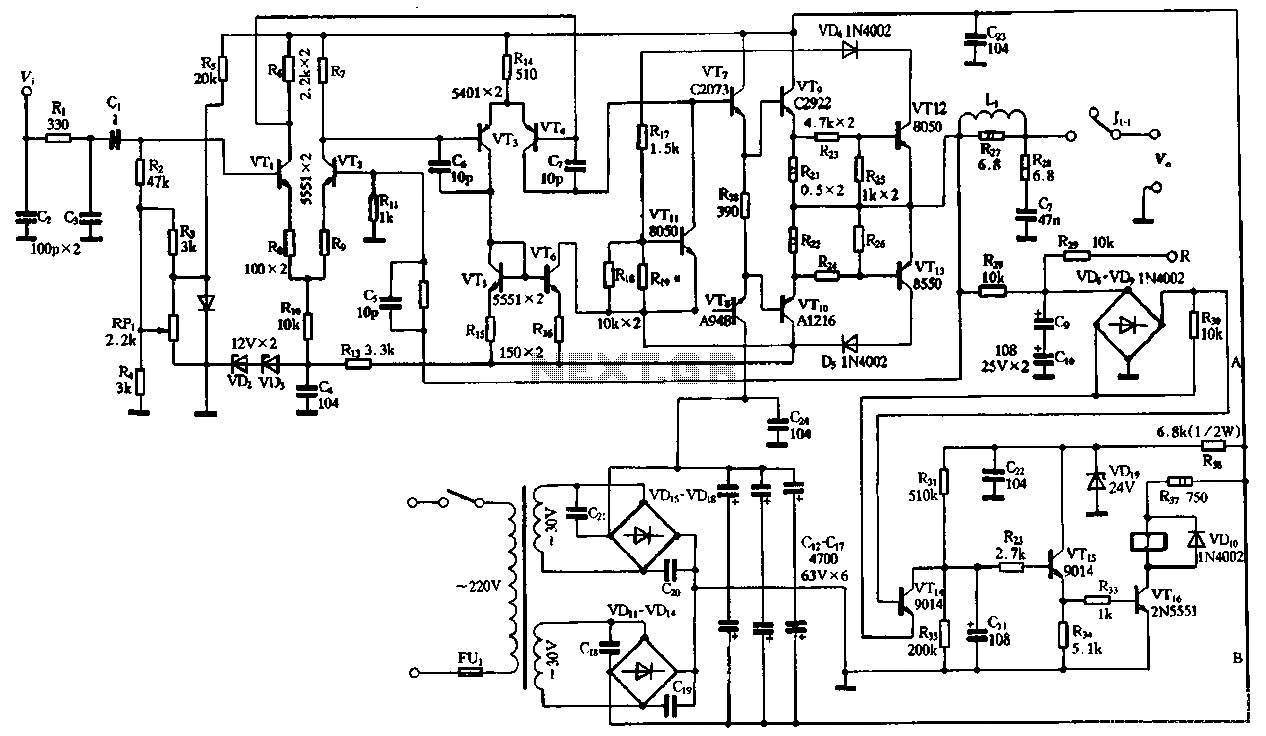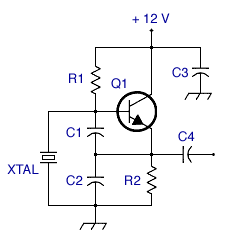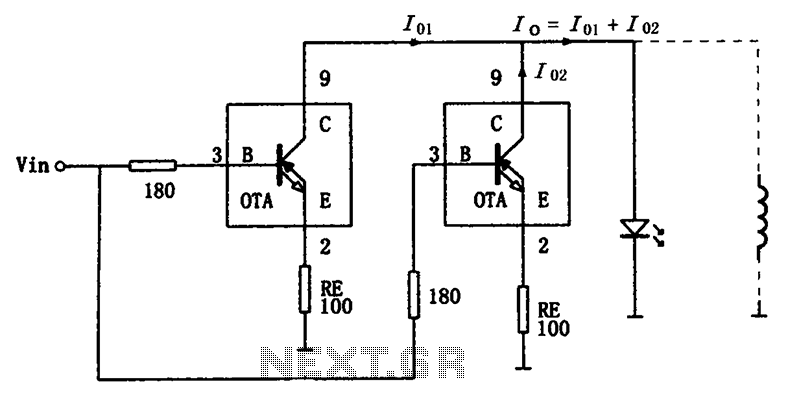
Auto Generator Regulator Circuit
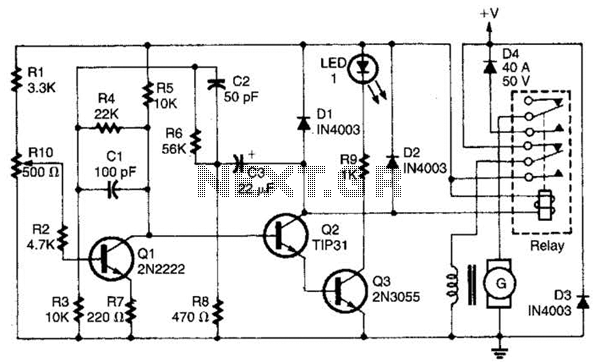
This regulator is designed to control a DC generator. In this configuration, one side of the field is grounded. Diode D4 prevents the battery from discharging through the generator and serves as a replacement for the mechanical cut-out relay. The RIO component adjusts the system voltage setting.
The described DC generator regulator circuit plays a crucial role in maintaining the efficiency and reliability of a DC power generation system. The grounding of one side of the field winding is a common practice that helps stabilize the magnetic field and enhances the overall performance of the generator.
Diode D4 is strategically placed in the circuit to ensure that the battery does not discharge back through the generator, which could lead to battery depletion and inefficient operation. By replacing the mechanical cut-out relay, D4 provides a more reliable and faster response to changes in voltage and current, thus improving the overall safety and functionality of the system.
The RIO, or Regulator Input Output, is an adjustable component that allows for fine-tuning of the system voltage. This feature is essential for adapting the output voltage to meet varying load requirements and ensuring that the connected devices receive the appropriate voltage for optimal performance. The ability to adjust the voltage setting can also help in protecting sensitive electronic components from overvoltage conditions.
In summary, the combination of the grounded field configuration, the protective function of diode D4, and the adjustable RIO setting creates a robust and efficient DC generator regulation system that enhances the performance and longevity of the power generation setup. This regulator is for the purpose of controlling a dc generator. The field configuration is that one side of the field is grounded. D4 prevents the battery from discharging through the generator and takes the place of the mechanical cut-out relay. RIO adjusts the system voltage setting. 🔗 External reference
The described DC generator regulator circuit plays a crucial role in maintaining the efficiency and reliability of a DC power generation system. The grounding of one side of the field winding is a common practice that helps stabilize the magnetic field and enhances the overall performance of the generator.
Diode D4 is strategically placed in the circuit to ensure that the battery does not discharge back through the generator, which could lead to battery depletion and inefficient operation. By replacing the mechanical cut-out relay, D4 provides a more reliable and faster response to changes in voltage and current, thus improving the overall safety and functionality of the system.
The RIO, or Regulator Input Output, is an adjustable component that allows for fine-tuning of the system voltage. This feature is essential for adapting the output voltage to meet varying load requirements and ensuring that the connected devices receive the appropriate voltage for optimal performance. The ability to adjust the voltage setting can also help in protecting sensitive electronic components from overvoltage conditions.
In summary, the combination of the grounded field configuration, the protective function of diode D4, and the adjustable RIO setting creates a robust and efficient DC generator regulation system that enhances the performance and longevity of the power generation setup. This regulator is for the purpose of controlling a dc generator. The field configuration is that one side of the field is grounded. D4 prevents the battery from discharging through the generator and takes the place of the mechanical cut-out relay. RIO adjusts the system voltage setting. 🔗 External reference
